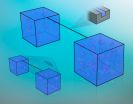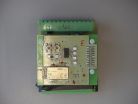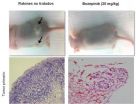INFORMATION:
The article, "Effects of bilateral salpingo-oophorectomy at the time of hysterectomy on pelvic organ prolapse: results from the Women's Health Initiative trial," will be published in the May 2015 print edition of Menopause.
Founded in 1989, The North American Menopause Society (NAMS) is North America's leading nonprofit organization dedicated to promoting the health and quality of life of all women during midlife and beyond through an understanding of menopause and healthy aging. Its multidisciplinary membership of 2,000 leaders in the field--including clinical and basic science experts from medicine, nursing, sociology, psychology, nutrition, anthropology, epidemiology, pharmacy, and education--makes NAMS uniquely qualified to serve as the definitive resource for health professionals and the public for accurate, unbiased information about menopause and healthy aging. To learn more about NAMS, visit http://www.menopause.org.
Saving ovaries does not help prevent prolapse for women after menopause
Surprise WHI finding points to age, not menopause, as a risk
2014-11-26
(Press-News.org) CLEVELAND, Ohio (November 26, 2014)--Removing ovaries at hysterectomy does not increase a woman's risk of pelvic organ prolapse after menopause. In fact, removing ovaries lowers the risk of prolapse. This surprising finding from a Women's Health Initiative study was published online this week in Menopause, the journal of The North American Menopause Society (NAMS).
Whether to remove ovaries at hysterectomy for reasons other than cancer is a subject of hot debate. Removing them reduces the risk of breast cancer and dramatically reduces the risk of ovarian cancer. On the other hand, studies have associated removing ovaries with increased risk of death, cardiovascular disease, lung cancer, and osteoporosis and with declines in cognitive ability and sexual function. And many assumed that removing ovaries would also increase the risk of pelvic organ prolapse. (The most common forms are bulging of the bladder, called "cystocele," or rectum, called "rectocele," into the vagina.)
But this analysis of the cases of nearly 9,000 women in the estrogen-alone part of the Women's Health Initiative studies showed that wasn't the case. In fact, women who retained their ovaries had a 23% higher risk (adjusted for age, number of births, obesity, and ethnicity) of having a cystocele or rectocele develop than women who had their ovaries removed and no subsequent estrogen therapy.
"When it comes to prolapse, age is likely more important than menopause and estrogen decline," commented NAMS Executive Director Margery Gass, MD, NCMP.
The analysis did corroborate other known risks for pelvic organ prolapse. The strongest is having given birth to more than one child, which more than doubles the risk. Obesity also increases the risk by as much as 75%. African-Americans have lower risk of prolapse than Latina, Asian, Native Americans, or white women.
ELSE PRESS RELEASES FROM THIS DATE:
The mysterious 'action at a distance' between liquid containers
2014-11-26
For several years, it has been known that superfluid helium housed in reservoirs located next to each other acts collectively, even when the channels connecting the reservoirs are too narrow and too long to allow for substantial flow. A new theoretical model reveals that the phenomenon of mysterious communication "at a distance" between fluid reservoirs is much more common than previously thought.
Liquids in containers that are at a distance from each other may behave collectively, even if the channels connecting the reservoirs are so narrow and long that they prevent ...
Classical enzymatic theory revised by including water motions
2014-11-26
Enzymes are macromolecular biological catalysists that lead most of chemical reactions in living organisms. The main focus of enzymology lies on enzymes themselves, whereas the role of water motions in mediating the biological reaction is often left aside owing to the complex molecular behavior. The groups of Martina Havenith (Cluster of Excellence RESOLV - Ruhr explores Solvation) and Irit Sagi (Weizmann Institue of Science, Israel) revised the classical enzymatic steady state theory by including long-lasting protein-water coupled motions into models of functional catalysis. ...
Amazonian shrimps: An underwater world still unknown
2014-11-26
A study reveals how little we know about the Amazonian diversity. Aiming to resolve a scientific debate about the validity of two species of freshwater shrimp described in the first half of the last century, researchers have found that not only this species is valid, but also discovered the existence of a third unknown species. The researchers concluded that these species evolved about 10 million years ago. The study was published in the open access journal ZooKeys.
The great biodiversity in Amazonia is an issue widely studied. However, the real number of species in this ...
Studying the speed of multi-hop Bluetooth networks
2014-11-26
This news release is available in Spanish.
"Let's suppose that we need a system for monitoring vital signs in a home for the elderly; preferably a wireless system. Using the deployed standard, the sensors that will be communicating via Bluetooth are connected to each other. "The elderly individuals in the home are fitted with these sensors which are used to measure their body temperature, heart rate, etc. and to forward the data to the nursing department," pointed out Josu Etxaniz-Marañón. "Time is a critical factor in a network of this type, and ...
New measuring system to objectively ascertain the fatigue level in physicians through eye movement
2014-11-26
An international team of scientists which includes researchers from the U. of Granada has demonstrated for the first time that it is possible to establish in an objective way the level of fatigue in physicians after long shifts through their eye movement.
This research reveals that the speed of saccadic movement (mostly voluntary rapid eye movements which we use to focus our gaze upon an object that attracts our attention) is an excellent index to measure objectively the level of fatigue in the medical profession.
In an article published in Annals of Surgery (the most ...
Research team proves the efficacy of new drug against stem cells that provoke the growth of cancer
2014-11-26
An Andalusian team of researchers led by the University of Granada has demonstrated the efficacy of a new drug against cancerogenic stem cells, which cause the onset and development of cancer, of relapse after chemotherapy and metastasis. This drug, called Bozepinib, has proved to be effective in tests with mice. The results have been published in the prestigious journal Oncotarget.
Cancerogenic stem cells appear in small quantities in tumours, and one of their important features is that they contribute to the formation of metastasis in different places within the original ...
Diverting a river from ecological disaster in northwestern China could provide new sustainable model
2014-11-26
For tens of thousands of years, modern humans have used the waterways to spread out across the surface of the planet. Major civilizations developed along massive rivers like the Nile in Egypt and the Yellow River in China, and massive water channels propelled the expansion of economies around the world. But in recent decades, according to a team of scientists at the Cold and Arid Regions Environmental and Engineering Research Institute, Chinese Academy of Sciences, in the northwestern Chinese city of Lanzhou, the competition between economic growth and the ecosystem of ...
Young scientist discovers new method to achieve ultra-narrow laser linewidth
2014-11-26
Chongqing, China--Dr. Tao Zhu and his team of researchers from Chongqing University, Southwest China, have discovered a new method to highly compress laser linewidth based on Rayleigh backscattering. Using their new method, Rayleigh backscattering can be collected in any waveguide structure and all wave bands to effectively compress a laser linewidth to merely hundreds of hertz, which could have a revolutionary impact on the field of laser technology. This makes it possible for portable laser devices to achieve an ultra-narrow linewidth at room temperature, which until ...
Hacked emails slice spam fast
2014-11-26
Spam spreads much faster and to more people when it is being propagated by hacked, or otherwise compromised, email accounts rather than legitimate accounts, according to research published in the International Journal of Security and Networks. The insight should help those modeling the dynamics of information diffusion as well as those hoping to track and trace spam with a view to slowing or blocking its propagation. Spam traditionally contained ads for fake or counterfeit products, but currently also contains disruptive rumors and information of a political nature.
Ghita ...
Glassy protein solution may cause eyesight deterioration
2014-11-26
Long-sightedness caused by age could be due to proteins in the lens of the eye that are converted from a fluid solution to a solid, glassy state. This has been shown in a study by researchers from institutions including Lund University.
Around the age of 40-50, many people find their sight deteriorates and they need to use reading glasses. This age-related long-sightedness is thought to be due to a reduction in the elasticity of the lens in the eye. A new research study appears to have put its finger on the details of what happens in the eye when long-sightedness develops.
"This ...
LAST 30 PRESS RELEASES:
Heart-brain connection: international study reveals the role of the vagus nerve in keeping the heart young
Researchers identify Rb1 as a predictive biomarker for a new therapeutic strategy in some breast cancers
Survey reveals ethical gaps slowing AI adoption in pediatric surgery
Stimulant ADHD medications work differently than thought
AI overestimates how smart people are, according to HSE economists
HSE researchers create genome-wide map of quadruplexes
Scientists boost cell "powerhouses" to burn more calories
Automatic label checking: The missing step in making reliable medical AI
Low daily alcohol intake linked to 50% heightened mouth cancer risk in India
American Meteorological Society announces Rick Spinrad as 2026 President-Elect
Biomass-based carbon capture spotlighted in newly released global climate webinar recording
Illuminating invisible nano pollutants: advanced bioimaging tracks the full journey of emerging nanoscale contaminants in living systems
How does age affect recovery from spinal cord injury?
Novel AI tool offers prognosis for patients with head and neck cancer
Fathers’ microplastic exposure tied to their children’s metabolic problems
Research validates laboratory model for studying high-grade serous ovarian cancer
SIR 2026 delivers transformative breakthroughs in minimally invasive medicine to improve patient care
Stem Cell Reports most downloaded papers of 2025 highlight the breadth and impact of stem cell research
Oxford-led study estimates NHS spends around 3% of its primary and secondary care budget on the health impacts of heat and cold in England
A researcher’s long quest leads to a smart composite breakthrough
Urban wild bees act as “microbial sensors” of city health.
New study finds where you live affects recovery after a hip fracture
Forecasting the impact of fully automated vehicle adoption on US road traffic injuries
Alcohol-related hospitalizations from 2016 to 2022
Semaglutide and hospitalizations in patients with obesity and established cardiovascular disease
Researchers ‘listen in’ to embryo-mother interactions during implantation using a culture system replicating the womb lining
How changing your diet could help save the world
How to make AI truly scalable and reliable for real-time traffic assignment?
Beyond fragmented markets: A new framework for efficient and stable ride-pooling
Can shape priors make road perception more reliable for autonomous driving?
[Press-News.org] Saving ovaries does not help prevent prolapse for women after menopauseSurprise WHI finding points to age, not menopause, as a risk




